Priyanka connected two different pieces of material and enclosed them in a box with three. Exterrial connections A, B, Cas shown. She then asked Rekha to guess how the two pieces of material were connected Rekha conducted the following experiments with the black box.
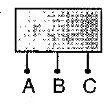
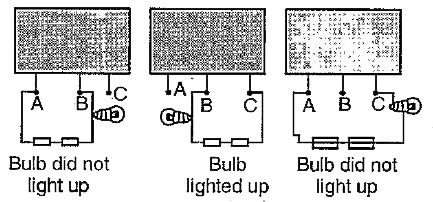




The correct Answer is:B
Step by step video, text & image solution for Priyanka connected two different pieces of material and enclosed them in a box with three. Exterrial connections A, B, Cas shown. She then asked Rekha to guess how the two pieces of material were connected Rekha conducted the following experiments with the black box. by Physics experts to help you in doubts & scoring excellent marks in Class 6 exams.
Topper's Solved these Questions
- BOOK - S CHAND IIT JEE FOUNDATIONCHAPTER - ELECTRICITYEXERCISE - SELF ASSESSMENT SHEET22videos
ELECTRICITY
- BOOK - S CHAND IIT JEE FOUNDATIONCHAPTER - ELECTRICITYEXERCISE - SELF ASSESSMENT SHEET22videos
ELECTRICITY
- BOOK - S CHAND IIT JEE FOUNDATIONCHAPTER - FORCE AND PRESSURE EXERCISE - Self Assessment Sheet11videos
FORCE AND PRESSURE
Similar Questions
Two pieces of conductor of same material and of equal length are connected in series with a cell. One of the two pieces has cross-sectional area double that of the other. Which one of the following statements is correct in this regard ?
View SolutionTwo conducting wires of the same material and of equal lengths and equal diameters are first connected in series and then parallel in a circuit across the same potential difference. Find the ratio of heat produced in series and parallel combination.
View Solution
Knowledge Check
- Question 1 - Select One
Three identical condensers are connected together in four different ways. First all of them are connected in series and the equivalent capacity is C1. Next all of them are connected in parallel and the equivalent capacity is C2. Next two of them are connected in series and the third one connected in parallel to the combination and the equivalent capacity is C3. Next two of them are connected in parallel and the third one connected in series with the combination and the equivalent capacity is C4. Which of the following is correct ascending order of yhe equivalent capacities ?
AC1<C3<C4<C2BC1<C4<C3<C2CC2<C3<C4<C1DC2<C4<C3<C1 - Question 2 - Select One
Wires A and B are identical except that each is made from a different material. The one end of wire A is connected to one end of wire B. The two remaining ends are connected across a battery and current flows through the two wires. Which one of the following statements concerning this situation is true?
AThe potential difference across the two wires is the same, but the current through each wire is differentBThe potential difference across the two wires is the same, and the current through each wire is the sameCThe potential difference across the two wires is different, but the current through each wire is the sameDBoth the potential difference across the two wires. and the current through each wire is different - Question 3 - Select One
A solid metallic sphere of radius a is surrounded by a conducting spherical shell of radius b(b>a). The solid sphere is given a charge Q. A student measures the potential at the surface of the solid sphere as V and the potential at the surface of spherical shell as Vb. After taking these readings, he decides . to put charge of −4Q on the shell. He then noted the readings of the potential of solid sphere and the shell and found that the potential difference is △V .
He then connected the outer spherical shell to the earth by a conducting wire and found that the charge on the outer surface of the shell as He then decides to remove the earthing connection from the shell and earthed the inner solid sphere. Connecting the inner sphere with the earth he observes the charge on the solid sphere as q2. He then wanted to check what happens if the two are connected by the conducting wire. So he removed the earthing connection and connected a conducting wire between the solid sphere and the spherical shelll. After the connections were made he found the charge on the outer shell as q3.
Potential difference (△CV) measured by the student between the inner solid shere and outer shell after putting a charge −4Q isAVa−3VbB3(Va−Vb)CVaDVa−Vb
(a) The emf of a cell is E and its intenal resistance is r. Its terminals are connected to a resistance R. The potential difference between the terminal is 12V if R=3Ω and 16V if R=8Ω. Find the values of E and r
(b) When an unknown resistance is connected across a series combination of two identical cells, each of 18V, current through the resistance is 4A. When it is connected across a parallel combination of the same cells, the current through it is 3A. Find the unknown resistance and internal resistance of each cell.
( c) p identical cells, each of emf E and internal resistance r, are joined in series to form a closed circuit. One cell (X) is joined with reversed polarity. Find the potential difference across each cell except X and also across X.
(d) 12 cells each having the same emf are connected in series and are kept in a closed box. Some of the cells are wrongly connected. This battery is connected in series with an ideal ammeter and two cells of same emf as of 12 cells. The current is 3A when the cells and the battery aid each other and 2A when the cells and battery oppose each other. How many cells in the battery are wrongly connected ?View SolutionConsider a box with three terminals on top of it as shown in figure.

Three components namely, two germanium diodes and one resistor are connected across these three terminals in some arrangement
A student performs an experiment in which any two of these three terminals are connected in the circuit shown in figure.
The student obtains graphs of current-voltage characteristics for unknown combination of components between the two terminals connected in the circuit. The graphs are
(i) When A is positive and B is negative
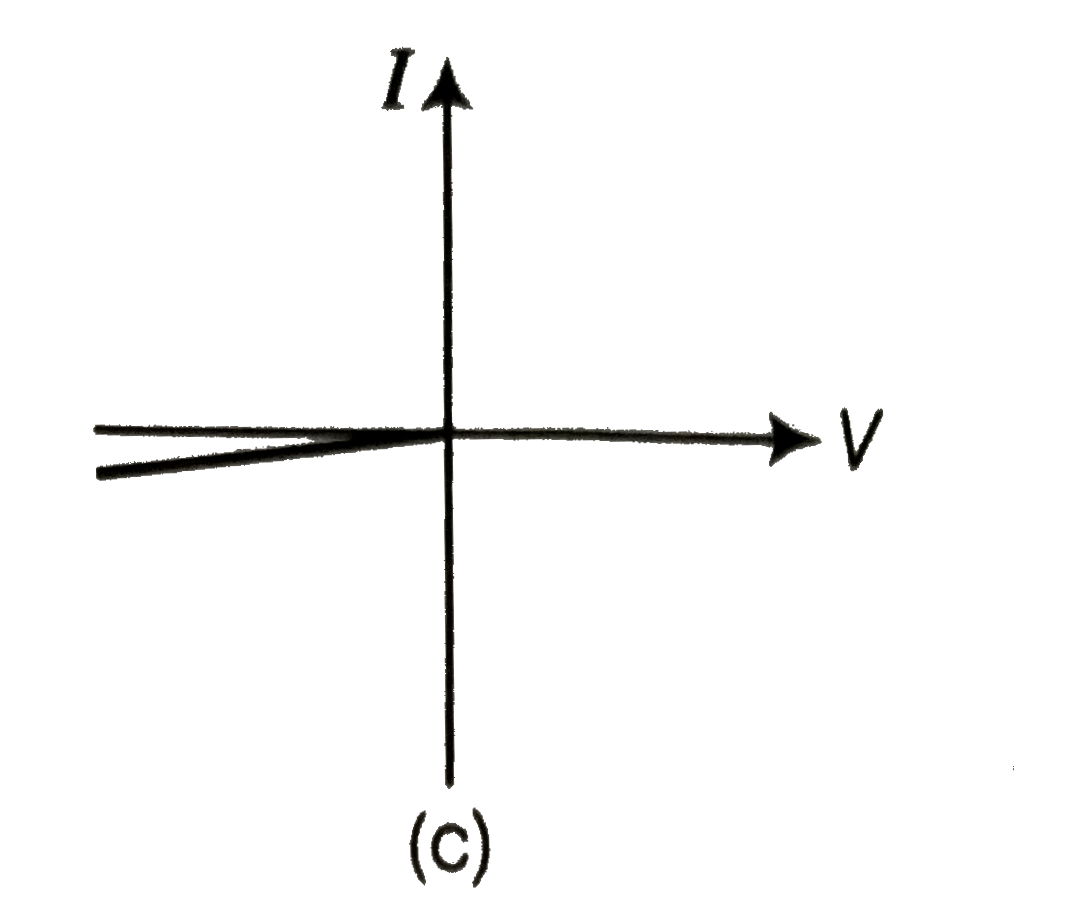
(ii) When A is negative and B is positive
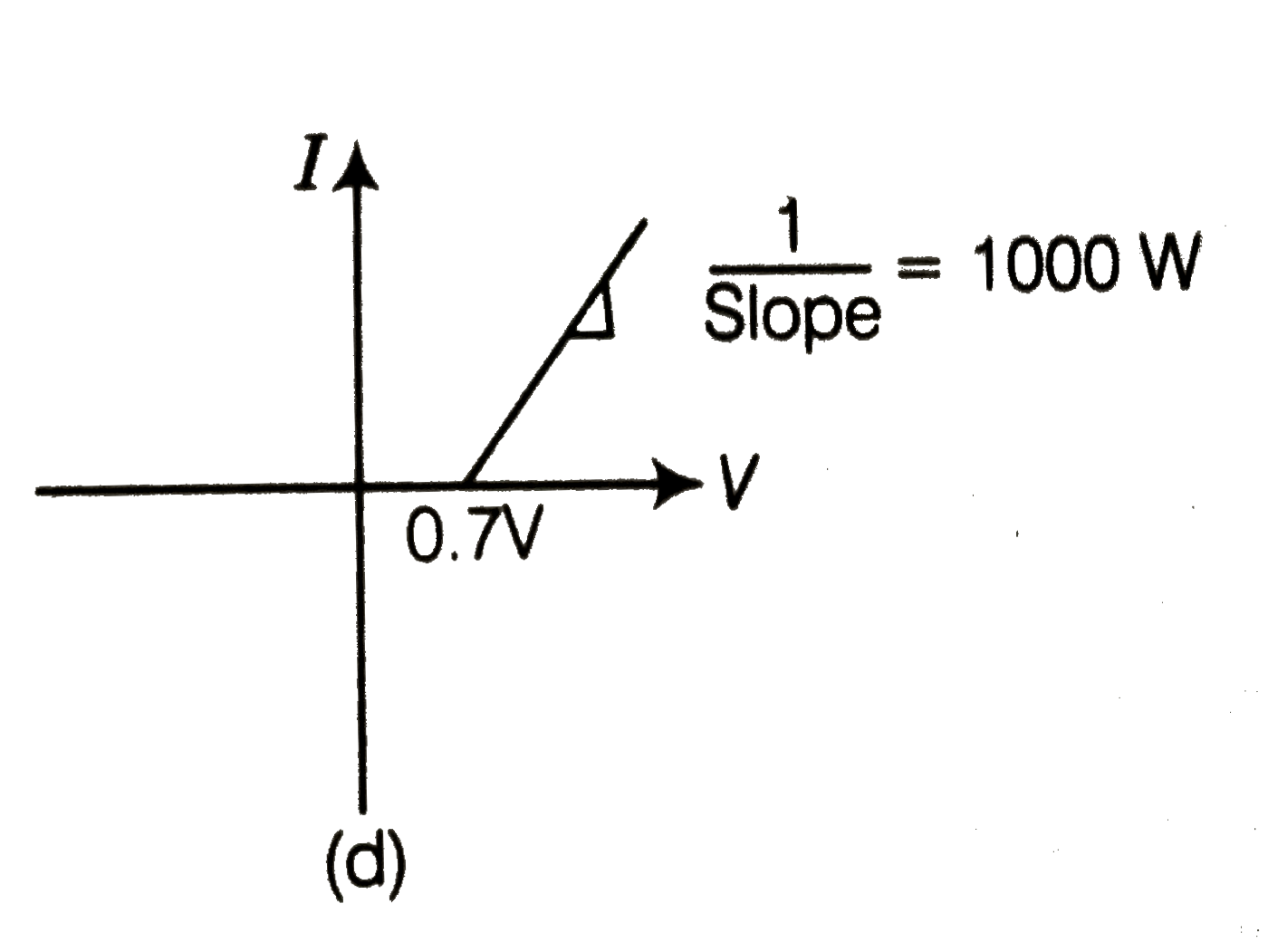
(iii) When B is negative and C is positve

(iv) When B is positive and C is neagtive
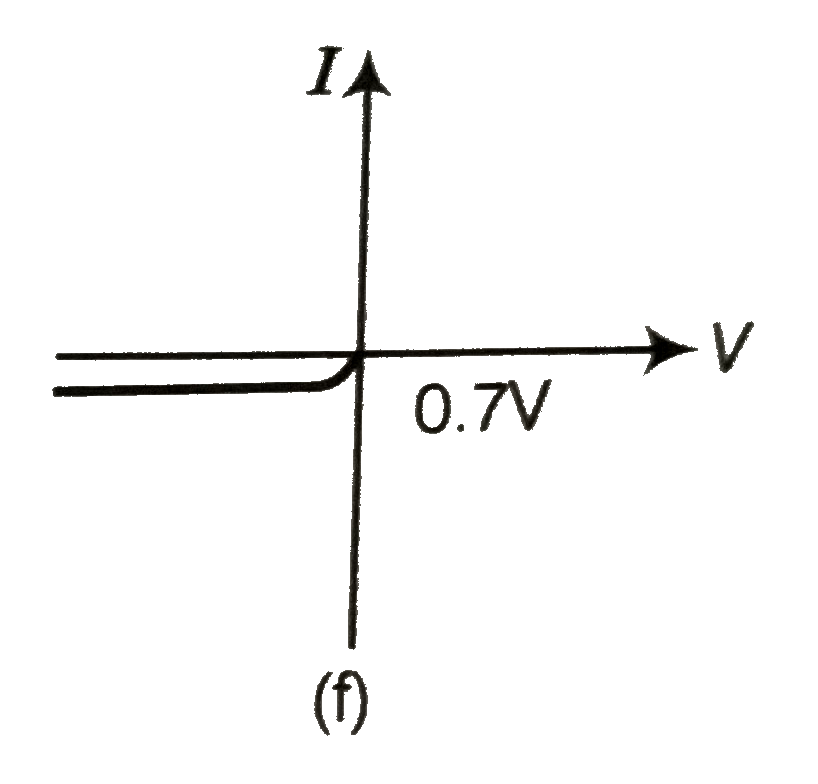
(v) When A is positive and C is negative
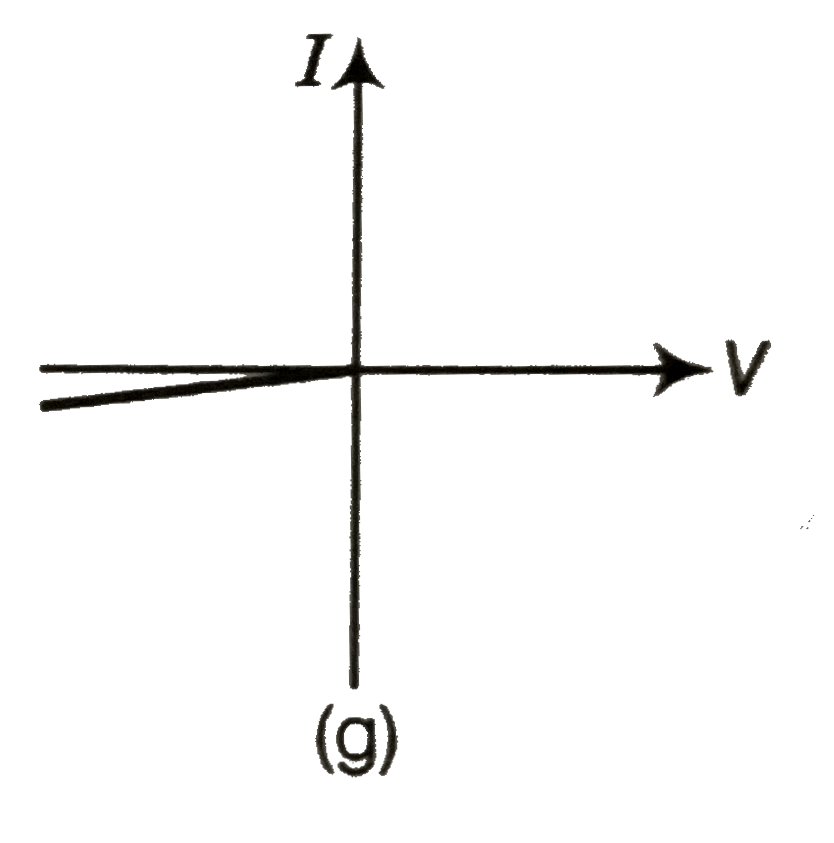
(vi) When A is negative and C is positive
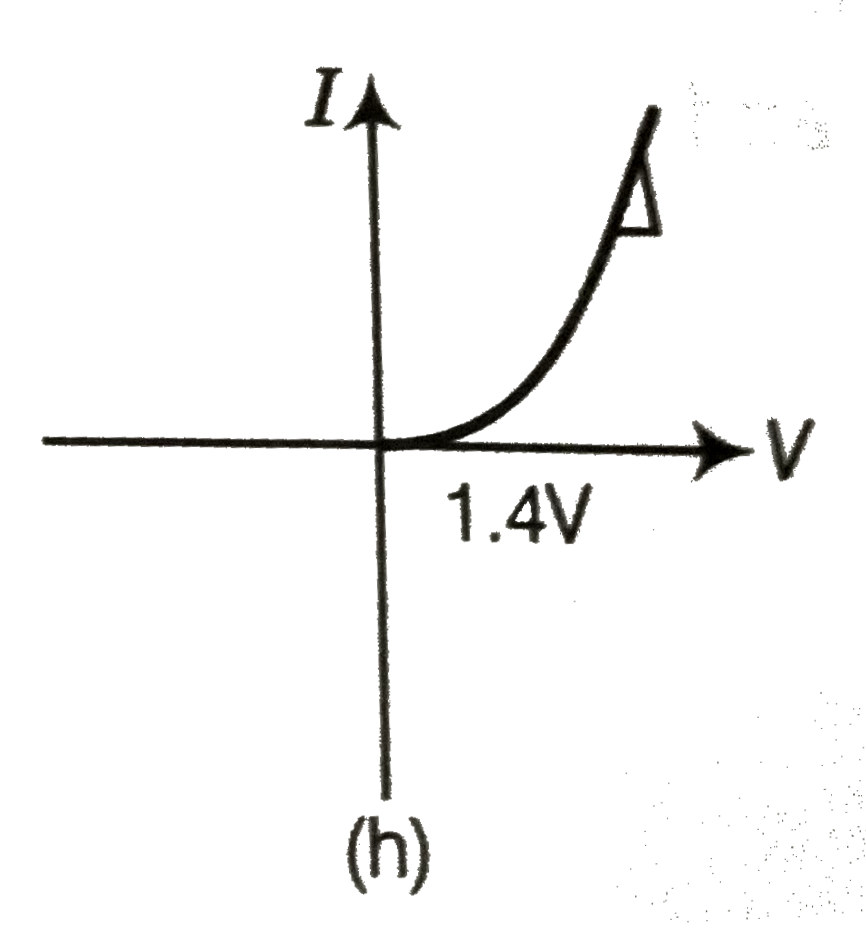
From these graphs of current − voltage characteristic shown in fig. (c) to (h) determine the arrangement of components between A, B and C.View SolutionA solid metallic sphere of radius a is surrounded by a conducting spherical shell of radius b(b>a). The solid sphere is given a charge Q. A student measures the potential at the surface of the solid sphere as V and the potential at the surface of spherical shell as Vb. After taking these readings, he decides . to put charge of −4Q on the shell. He then noted the readings of the potential of solid sphere and the shell and found that the potential difference is △V .
He then connected the outer spherical shell to the earth by a conducting wire and found that the charge on the outer surface of the shell as He then decides to remove the earthing connection from the shell and earthed the inner solid sphere. Connecting the inner sphere with the earth he observes the charge on the solid sphere as q2. He then wanted to check what happens if the two are connected by the conducting wire. So he removed the earthing connection and connected a conducting wire between the solid sphere and the spherical shelll. After the connections were made he found the charge on the outer shell as q3.
q2 isView SolutionA solid metallic sphere of radius a is surrounded by a conducting spherical shell of radius b(b>a). The solid sphere is given a charge Q. A student measures the potential at the surface of the solid sphere as V and the potential at the surface of spherical shell as Vb. After taking these readings, he decides . to put charge of −4Q on the shell. He then noted the readings of the potential of solid sphere and the shell and found that the potential difference is △V .
He then connected the outer spherical shell to the earth by a conducting wire and found that the charge on the outer surface of the shell as He then decides to remove the earthing connection from the shell and earthed the inner solid sphere. Connecting the inner sphere with the earth he observes the charge on the solid sphere as q2. He then wanted to check what happens if the two are connected by the conducting wire. So he removed the earthing connection and connected a conducting wire between the solid sphere and the spherical shelll. After the connections were made he found the charge on the outer shell as q3.
q3 isView SolutionTwo conducting wires of the same material and of equal lengths and equal diameters are first connected in series and then parallel in a circuit across the same potential difference. The ratio of heat produced in series and parallel combinations would be:
View Solution

